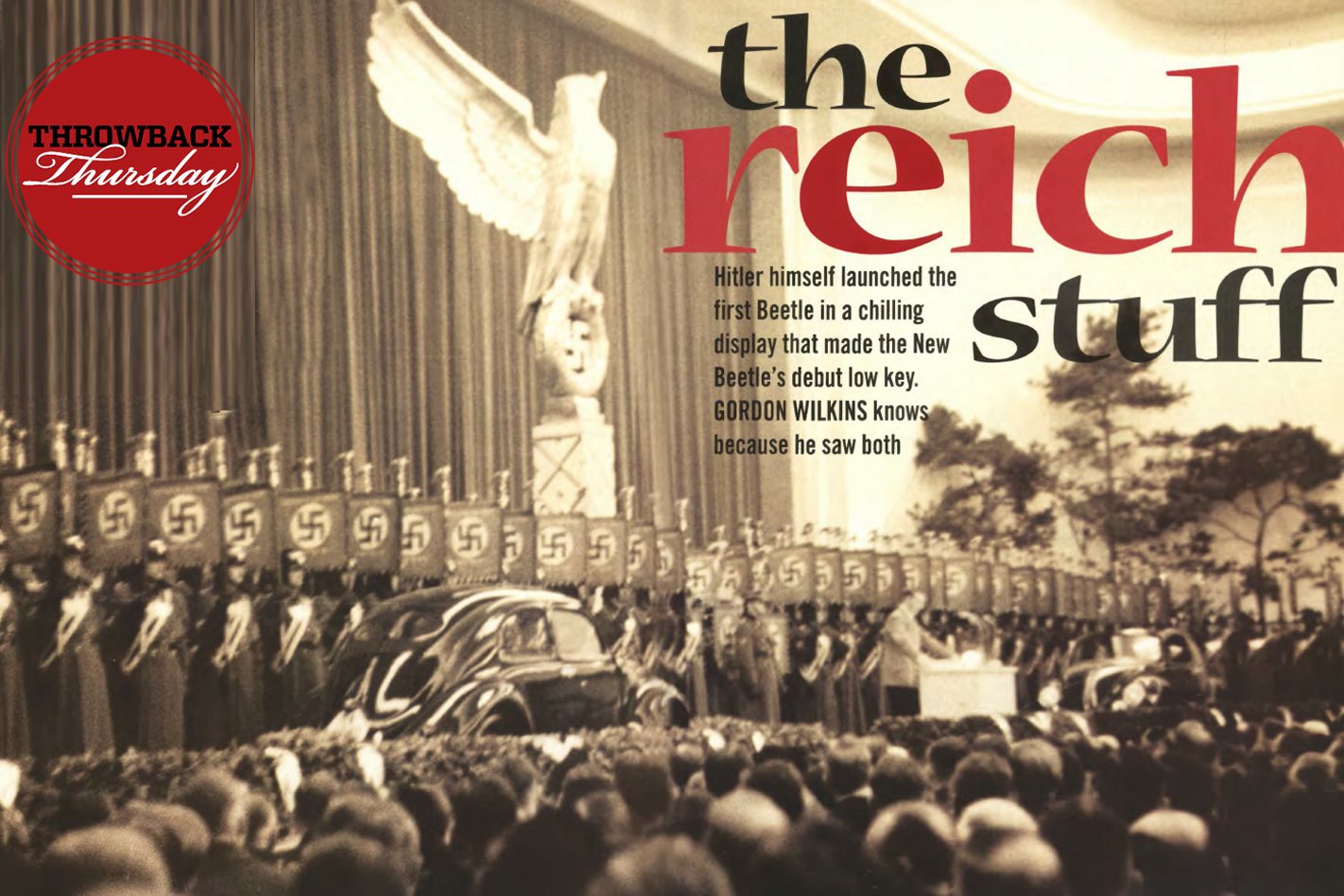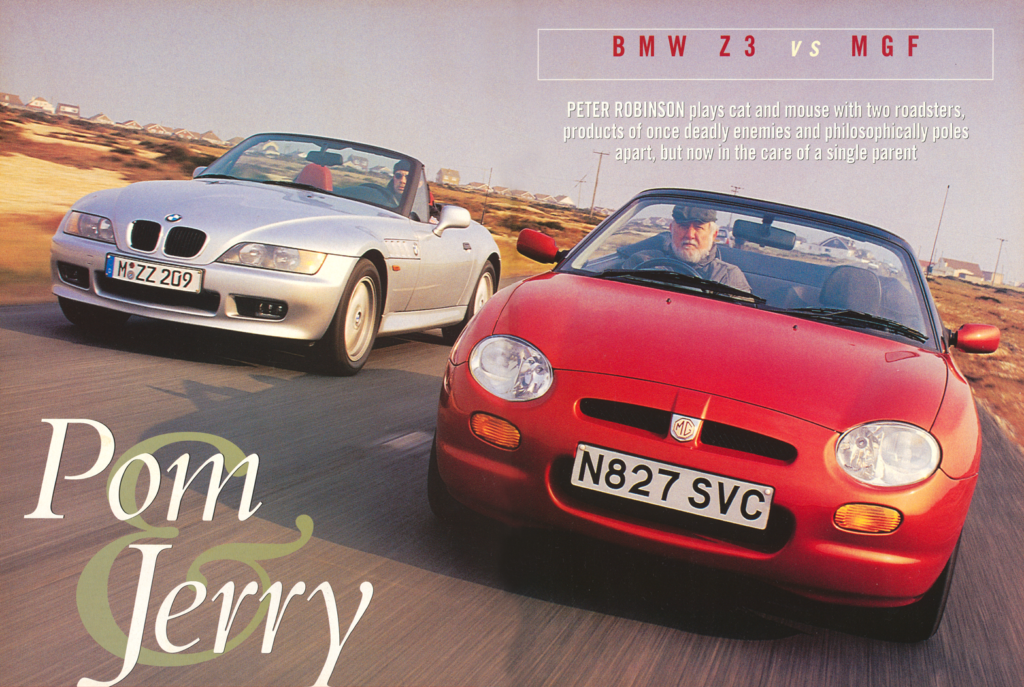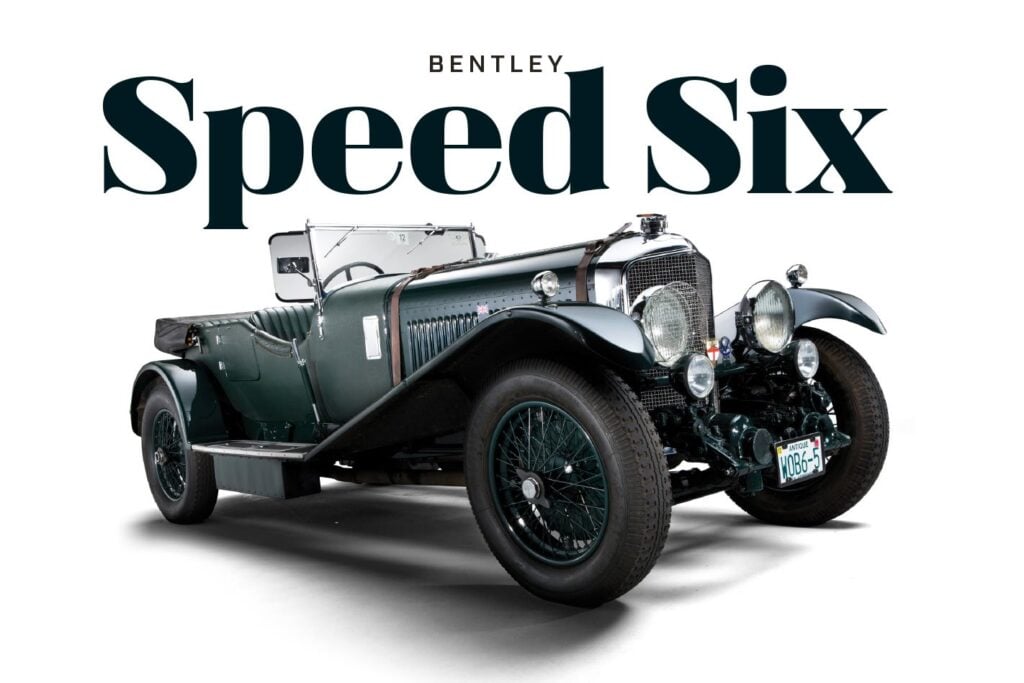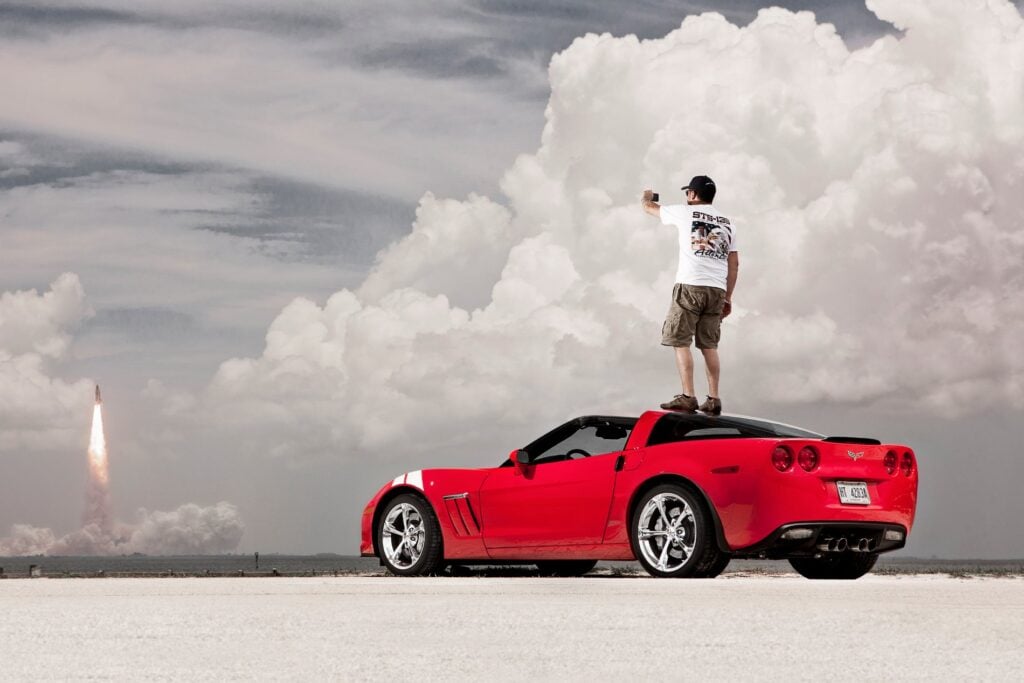The launch of the original beetle was possibly the most grandiose car launch in history. It had a giant golden eagle, a multi-car parade, Hitler, and a journo willing to share his story with Wheels.
THE original Volkswagen Beetle is one of the most important cars in the history of the automobile. Its impact on the automotive world can be measured in the same realms as the Ford Model T. However, the plucky Volkswagen has a dark past and an association that is often left unspoken. The success of the Beetle can be largely tied to one man, who was the architect of its design and launch. That man was Adolf Hitler.
In 1939, Wheels was still a couple of years away from its first issue when the Beetle was launched in front of a giant golden eagle emblazoned with a swastika, but journalist Gordon Wilkins was there on the day. Wilkins recounted the fascinating experience to Wheels in 1998.
In this story, Wilkins recalls the chilling display put on by Hitler, which included streamlined race cars, and a proclamation of the lead or the Third Reich’s determination to promote motorsport. It was the sort of car launch which had never been seen before, and will likely never be seen again.
With Volkswagen confirming the reborn Beetle will be ending production once again, go back in time to when the peoples car was first revealed.
The Reich Stuff
Hitler himself launched the first beetle in a chilling display that made the New Beetle’s debut low key. GORDON WILKINS knows because he saw both.
First published in the April 1998 issue of Wheels magazine, Australia’s most experienced and most trusted car magazine since 1953.
“It was the most grandiose and dramatic car launch ever seen. Nothing like it before or since; a suitable launch for what was to become the best-selling car in the world. I know, because I was there.
The program got off to a spectacular start with Hitler and leading members of his government in a fleet of Mercedes sedans and cabriolets driving from the Chancellery in the Wilhelmsplatz up the
Kaiserdamm to the Berlin motor show through streets closed to traffic and lined by thousands ofNazi brown shirts, troopers of the Nazi motorised militia, the NSKK, the black SS and the labourers of the Arbeitsdienst. It was cold and it had been raining so there were greatcoats over the brown shirts plus the usual black crash helmets or forage caps and jackboots.
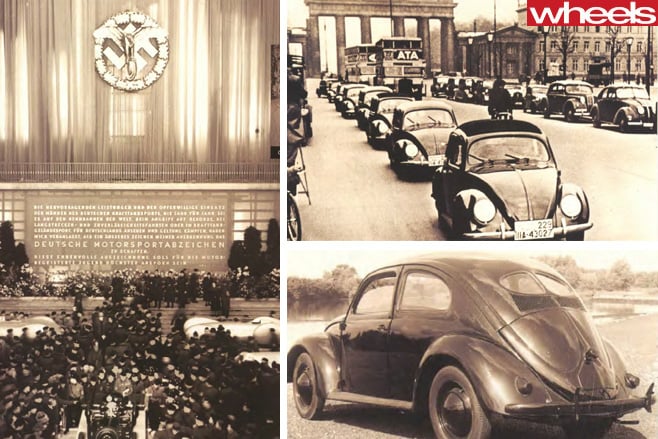
The Nazis had taken over the motor show but the motor industry had to foot the bill. The auditorium was dominated by a giant golden Nazi eagle before tall red curtains. Below was the speaker’s rostrum and on each side of it a Volkswagen. Behind the rostrum, a long line of NSKK trumpeters and dozens of standard bearers each with his red swastika banner.
A representative of the motor industry made the first speech, and then joseph Goebbels reviewed progress in expanding the car market since Hitler had abolished the onerous car taxes. Finally Hitler himself appeared in brown Nazi jacket and black trousers, rather more impressive than the baggy breeches and high boots he sometimes wore. It was a long speech with the familiar snarling and fist clenching. Once again he extolled the virtues of the Volkswagen which he had now decreed must be called the KdF to identify it with the German Labour Front, source of such facilities as subsidised entertainment and holiday cruises for the workers, whose motto was Kraft durch Freude (‘Strength through Joy’), and which would handle distribution of the new Peoples’ car.
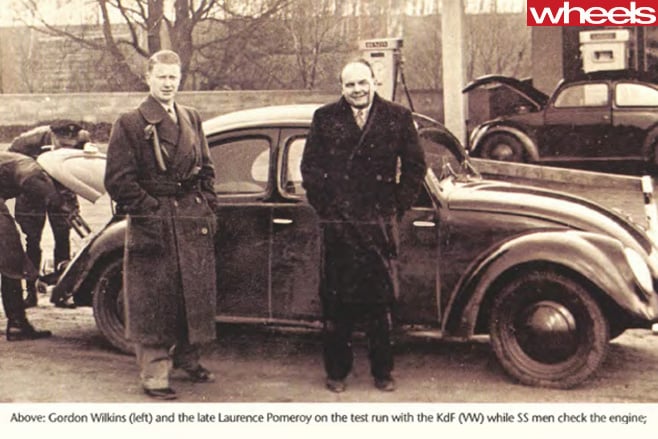
The drums rolled, the great audience rose to its feet and sang Deutschland Uber Alles followed by the Nazi Horst Wessel song. The rich red curtains rolled back and there under the floodlights was the motor show. Or part of it, for it filled nine balls with cars, motorcycles, trucks, buses and coaches, materials and accessories. There were no VWs for sale but the chassis bad the centre spot in the Hall of Fame surrounded by the streamlined speed record cars of Mercedes Benz and Auto Union, a record breaking diesel Hanomag, race winning BMWs and motorcycles.
The Nazis had cleaned up Berlin’s once notorious nightlife but the motor show was the focus for many social events and I was invited by Dr Goebbels to a glittering party at the Adlon Hotel. Guests were greeted by the beautiful Frau Goebbels and as his portfolio included control of the film industry there were aspiring starlets beside established names. The Schnauferl Ball, equivalent to the annual dinner of our Veteran Car Club was a more relaxed affair with fewer uniforms and more solid citizens in evening dress. Instead of foxtrotting with nubile young blondes, I found myself waltzing with elderly ladies of more substantial build. Nice people caught up in a system where the children were being encouraged to spy on their parents.
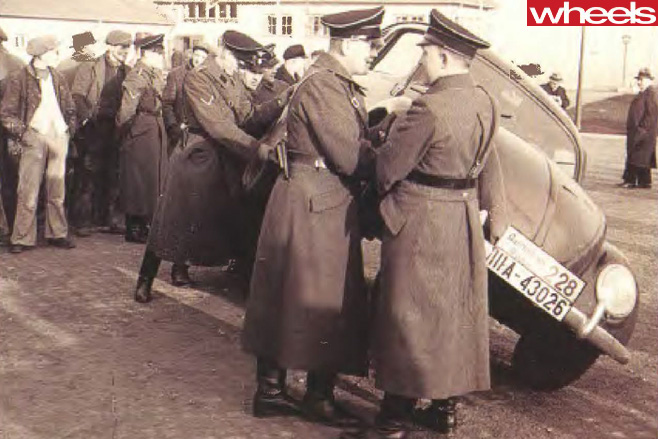
Out on the autobahn we settled down to cruise at the car’s 100km/h top speed. Comparisons with existing cars were difficult because this one was designed to open up a new market not catered for by the existing industry whose analysts said Hider’s price of 990 Reichsmarks was impossible.
The car was bigger than our Austin Sevens and Morris Minors, more Spartan in equipment and finish, more advanced in appearance and design. Its sloping front and built-in headlamps, the smooth curve from roof to tail, represented streamlining as then understood. Acceleration was leisurely but long gearing made it feel more relaxed than our little buzz boxes, although the cooling £an howled at the rear. There was a rudimentary heater where we had none and independent suspension all round, something unknown on British small cars. The ride was choppy at low speeds but coped well with cobblestones.
The flat four air-cooled 986cm3 engine was over-square, with big bore and short stroke which would have entailed heavy taxation in Britain where tax was based on bore size, but it ensured low piston speed which, with small bore inlet manifolds to keep maximum power down to 18kW, contributed to its ability to cruise flat-out indefinitely. Average fuel consumption was quoted as 43mpg (6.6L/100km). Despite the long gearing a kerb weight of only 580kg enabled it to perform better on Mountain passes than heavier contemporaries with similar engine power.
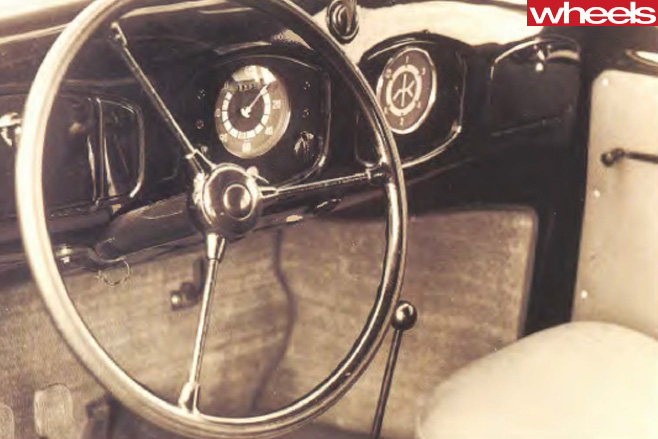
Later I had another run. Changing down to accelerate, you had to double de-clutch. No synchromesh. But any attempt at faster cornering produced fierce oversteer. The little tyres tucked under on their swing axles, the outer tyre cambered the wrong way, lost grip and the tail swung round. This Beetle could bite.
Quick steering needing only 2.5 turns lock to lock gave experienced drivers a sporting chance of regaining control, but this car was to sell to inexperienced drivers. Professor Porsche knew the problem. Although trying to carve every cent off the cost to meet Hitler’s price target he accepted the cost of aluminium cylinder heads and magnesium castings for crankcase and gearbox to get the weight down at the rear.
The British Technical Commission, Ford Motor Company, Rootes Group and others who dismissed the VW as a crude vehicle with no commercial future have been mocked for it since, but at the time they were right. You could not have sold that original Beetle to Britons or Americans in 1939 or at any time since. The British Army officers who put it into production after the war were already improving it.
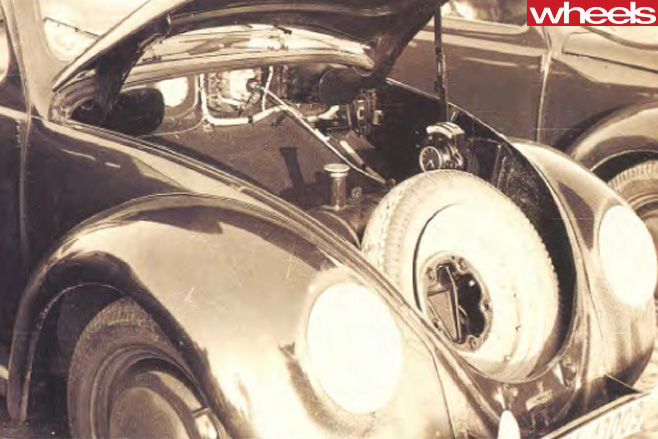
Heinrich Nordhoff who had strongly criticised the design but suddenly found himself in charge of the operation said, “It had as many bugs as a dog had fleas.” But he also saw definite features which were greatly desirable and not found in cars of comparable size … an amazing motorcar with a special personality and unlimited possibilities.” Der Spiegel summed it up, “The British Commission which minimised the value of the car was not so wrong .What the Englishman did not see were the enormous development possibilities”.
In 10 years, development enabled the Beetle to astonish Australia with consecutive wins and significant placings in the 1955-57 round Australia trials.
By 1981 when I watched the 20 millionth Beetle roll off the line in Mexico the car looked like all other Beetles, protecting re-sale values, but of its 5115 parts, only one, a securing strip for the seal round the front bonnet was the same as on the original.
Having also been to the launch of the New Beetle in Detroit, I have to say the car is cute, instantly recognisable; the old shape refined and modernised. But underneath, there’s no resemblance.
I find it difficult to compare the two Beetles because they are two different cars designed for different markets. The first, a drab, austere, budget priced outsider; the new”one familiar shape cleverly modernised with performance only expensive sports cars could approach in 1939 and lavishly equipped for prosperous buyers, some of whom may remember the old one with a touch of nostalgia but want all modem amenities.
Yes, the New Beetle should be fun, but I’ll be surprised if they sell 20 million of them.

